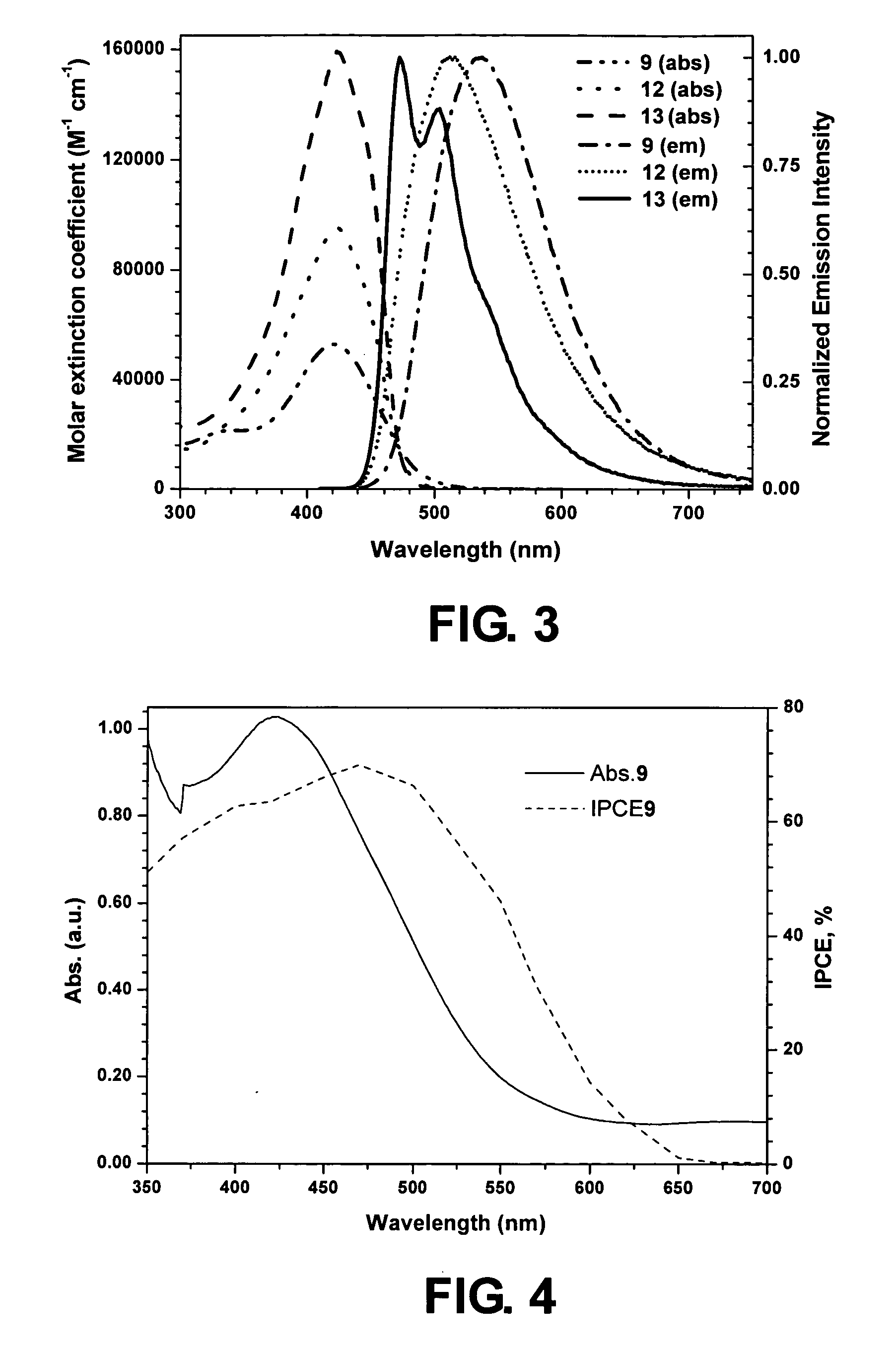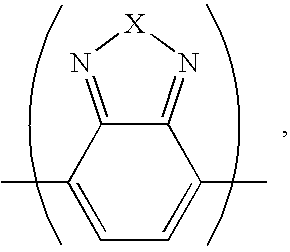Organic dye used in dye-sensitized solar cell
a solar cell and organic dye technology, applied in the field of organic dye used in dye-sensitized solar cells, can solve the problems of insufficient performance of dsscs based on these large molecules, and achieve the effect of dramatically improving the performance of the present dye-sensitized solar cell
- Summary
- Abstract
- Description
- Claims
- Application Information
AI Technical Summary
Benefits of technology
Problems solved by technology
Method used
Image
Examples
example 1-4
[0027] In Examples 1-4, four dye compounds S1-S4 of general formula (2) are respectively synthesized and investigated.
[0028] Example 1: dye S1, X=S, Ar=C6H4 (p-phenylene)
[0029] Example 2: dye S2, X=Se, Ar=C6H4
[0030] Example 3: dye S3: X=S, Ar=C4H2S (2,5-thienylene)
[0031] Example 4: dye S4: X=Se, Ar=C4H2S
[0032] In benzo(thia / selena)diazole-based fluorophores, the low-energy absorption is predominantly charge transfer in nature, and the same is true with the low-lying excited state also. This will ensure and enhance the possibility of charge separation and migration in such systems. The dyes were obtained in moderate yields in three steps as illustrated in Scheme 1.
[0033] In the first step, the donor is attached to the core either by Stille or Suzuki coupling reactions. These reactions produced the disubstituted side products as well. However monocapped compounds can be easily separated by column chromatography. In the next step, this bromo-exposed intermediate was reacted wit...
examples 5-9
[0040] In Examples 5-9, five dye compounds 9-13 of general formula (3) are respectively synthesized and investigated. The thienylfluorene group in formula (3) is an electron-rich group
[0041] Example 5: dye 9, n=1; Ar=1-naphthyl
[0042] Example 6: dye 10, n=1; Ar=9-anthracenyl
[0043] Example 7: dye 11, n=1; Ar=1-pyrenyl
[0044] Example 8: dye 12, n=2; Ar=1-naphthyl
[0045] Example 9: dye 13, n=3; Ar=1-naphthyl
[0046] The dyes were constructed by an iterative synthetic protocol illustrated in Scheme 2.
[0047] From the known compound, 2-(7-bromo-9,9-diethyl-9H-fluoren-2-yl)thiophene (2) diarylamine substituted fluorenylthiophene derivatives (3-5) were obtained by the C—N coupling reactions involving Hartwig's catalyst and the corresponding diarylamine. These thiophene derivatives were converted into their corresponding thiophenealdehydes (6-8) by lithiation with n-butyl lithium and subsequent quenching with dimethylformamide. Later the aldehydes 6-8 were converted to the dyes 9-11 by r...
PUM
| Property | Measurement | Unit |
|---|---|---|
| thickness | aaaaa | aaaaa |
| HOMO-LUMO gap | aaaaa | aaaaa |
| organic | aaaaa | aaaaa |
Abstract
Description
Claims
Application Information
 Login to View More
Login to View More - R&D
- Intellectual Property
- Life Sciences
- Materials
- Tech Scout
- Unparalleled Data Quality
- Higher Quality Content
- 60% Fewer Hallucinations
Browse by: Latest US Patents, China's latest patents, Technical Efficacy Thesaurus, Application Domain, Technology Topic, Popular Technical Reports.
© 2025 PatSnap. All rights reserved.Legal|Privacy policy|Modern Slavery Act Transparency Statement|Sitemap|About US| Contact US: help@patsnap.com



